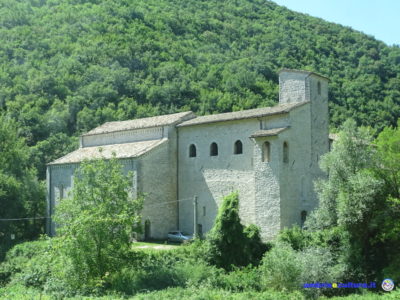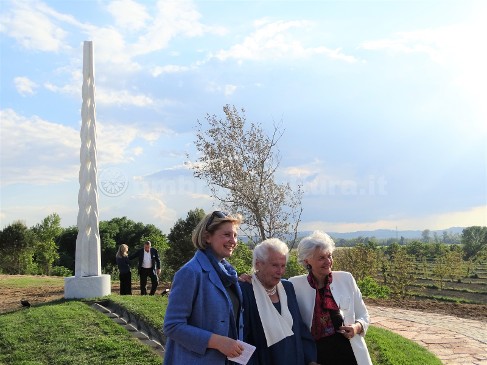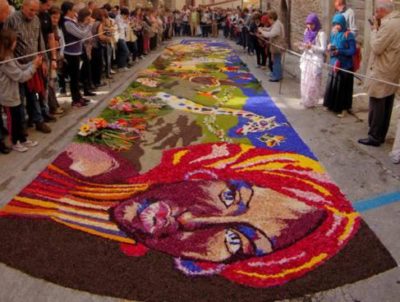In an emerald sea, in the municipality of Scheggia-Pascelupo, at the junction (that’s why “Congiuntoli”) of the Sentino and Riofreddo rivers at the border between Umbria and Marche, stands the abbey of Sant’Emiliano in Congiuntoli.
One of the oldest monasteries in Umbria, the abbey was founded at the end of the tenth century, like the coeval Santa Maria di Sitria and Fonte Avellana, and was inhabited by Cistercian monks until 1596 and then abandoned, probably due to the presence of the abbots commanders, sent by the Holy See to directly manage the immense wealth of the abbeys and monasteries.
From that moment on, an unstoppable decline will mark the fate of the abbey of Sant’Emiliano in Congiuntoli, which will culminate with its sale by auction by the Italian state to some local farmers.
Once it became a farmhouse, its structures were used as barns, stables and deposits, the new owners did not carry out any maintenance on the building, which was subject to constant degradation until the roof collapsed with the loss of the frescoes.
Even today this situation, in part, remains: the church, which can be visited, is owned by the Italian State, the rest of the structure is still in the hands of private individuals and in a state of semi-abandonment.
The oldest environment of the abbey is the first church (which is still used as a barn today), to which was added the second church, the one that can be visited, realized by the Templars to demonstrate their power.
From the sober and sparse lines, to two naves and without apsidal termination, typical architecture of Cistercian architecture, the abbey church was used as a stable until the sixties of the twentieth century, when neglect caused the collapse of the roofs of the aisles. Due to this collapse the stone altar was destroyed and lost forever.
The many years without the roof covering made the interior of the church a real wood, the roots of which divided the original floor, of which a small example is still visible.
Provisional intervention by Gian Battista Emiliani, owner of the Cartiere di Fabriano, who financed in 1907 the recovery of the last surviving fresco, now kept in the Pinacoteca Civica di Fabriano and of which in the church you can admire a life-size reproduction: the Madonna in the act of breastfeeding the Baby Jesus, Saint Catherine of Alexandria and Saint Emilian, to whom the abbey is dedicated.
The road that is used to reach Sant’Emiliano was, already 2500 years ago, a diverticulum of the Via Flaminia, hence the interest in the abbey by the Templars, because it was a pilgrimage route both towards Rome and Ancona, therefore, towards the Holy Land.
Symbols of the Knights of the Temple are still visible in Sant’Emiliano: a panel on the keystone of one of the mullioned windows, placed on the outer wall, bears a Greek cross with a Templar license, a six-petaled flower of life, a five-petal dog rose, associated with the figure of Mary to whom the Order of the Temple was dedicated.
Below the symbols is depicted a scene in which a woman holds a child in her arms in the act, it seems, to offer it to the Knight, probably symbolizing Mary entrusting her son, and the Holy places, to the protection of the Knights of the Temple. The dedication to Pope Honorius IV has the date 1286.
Benedetta Tintillini
Find Sant’Emiliano in Congiuntoli on Google Maps:



